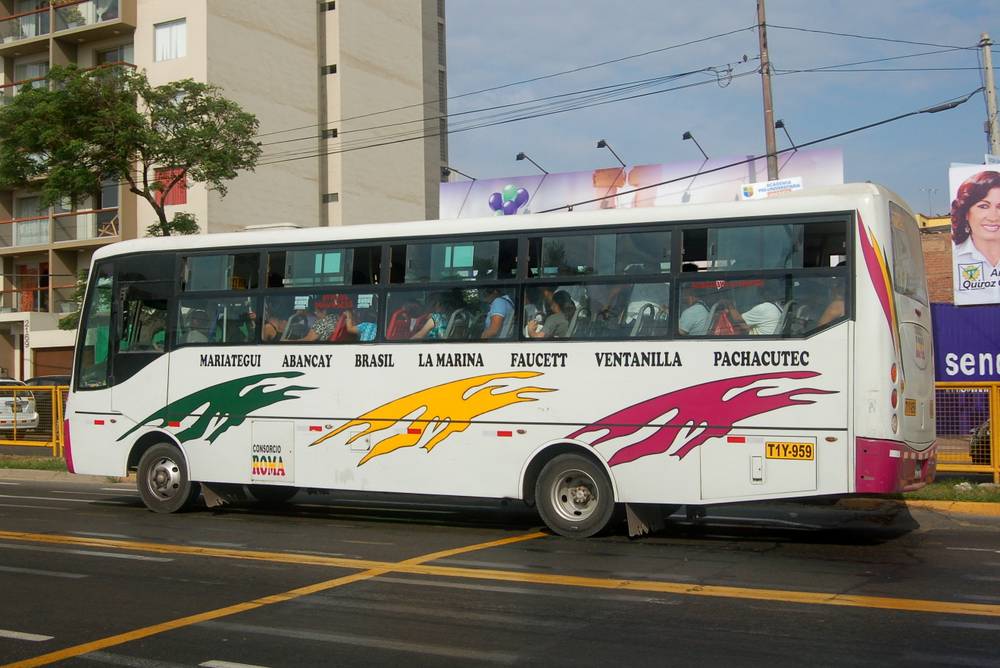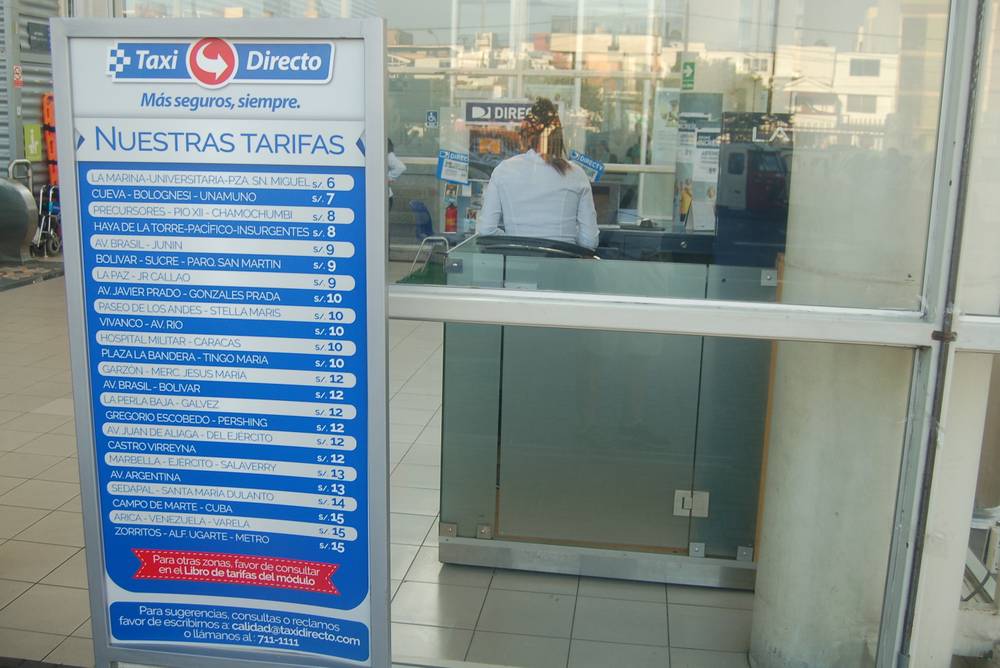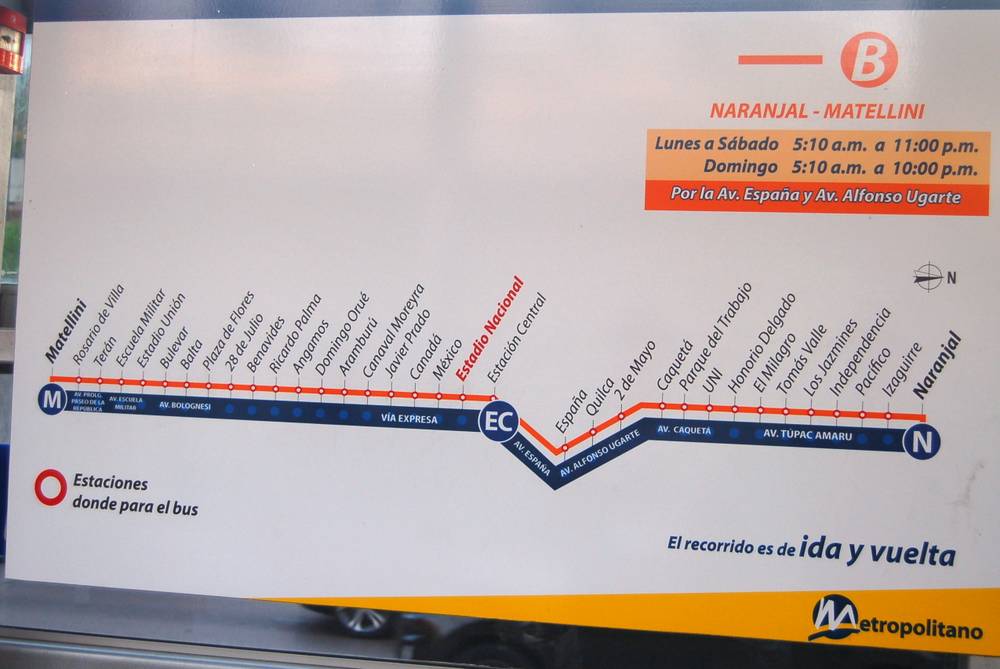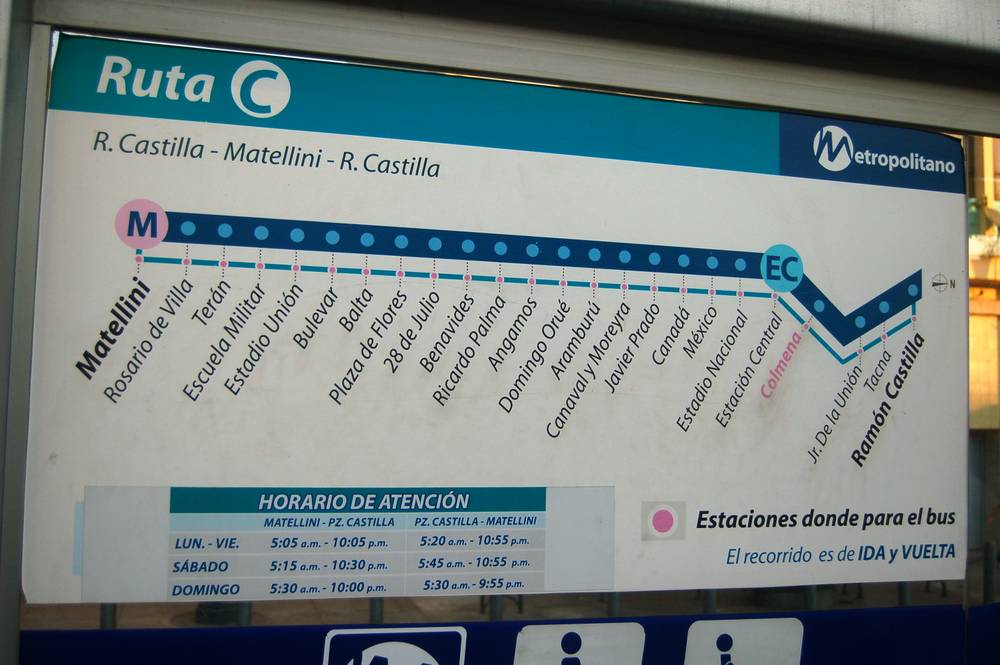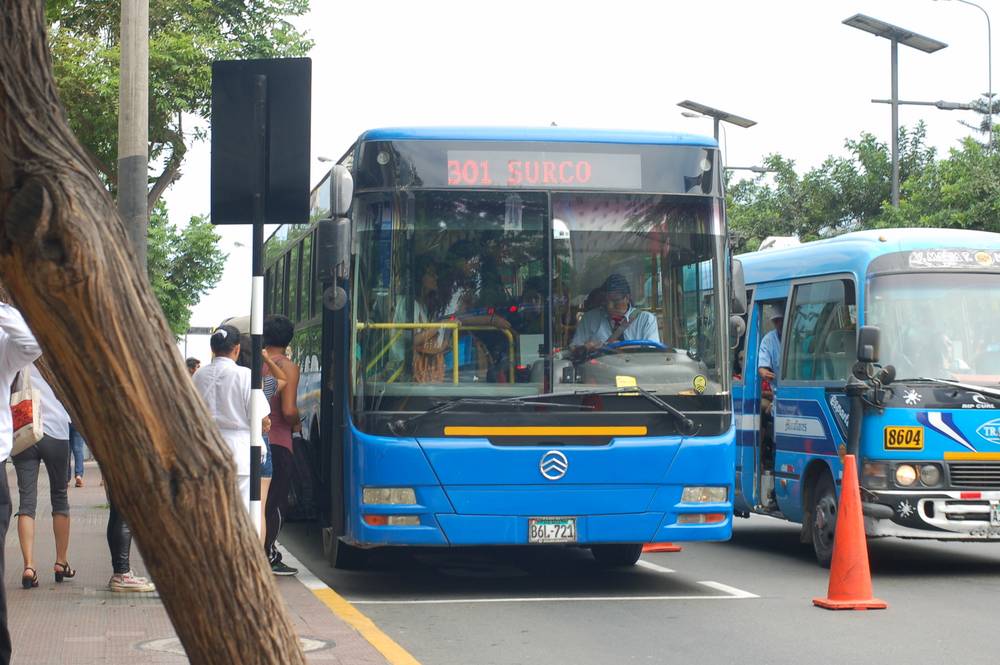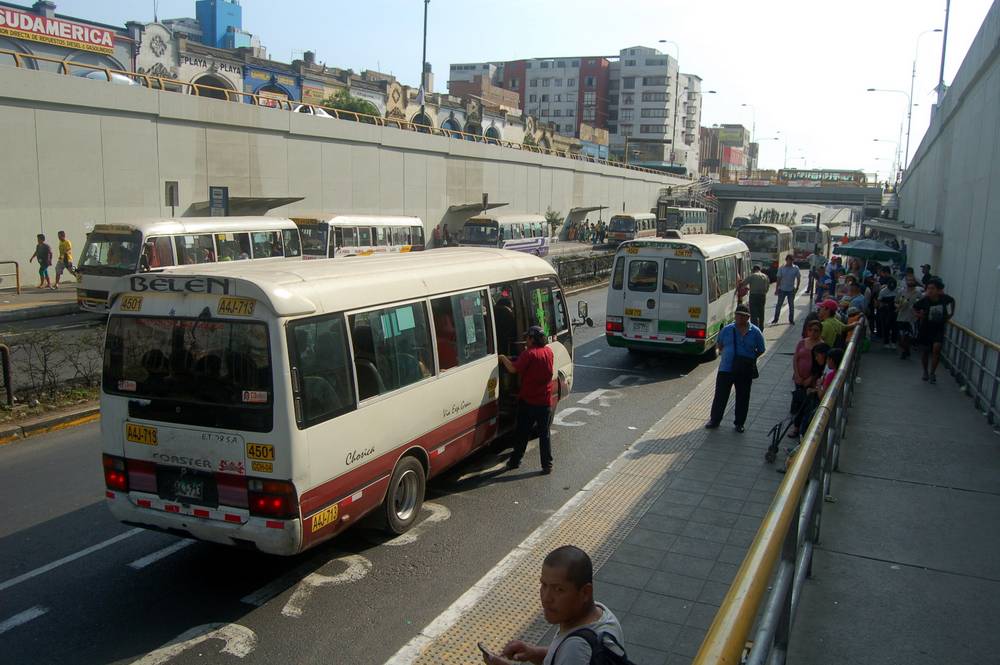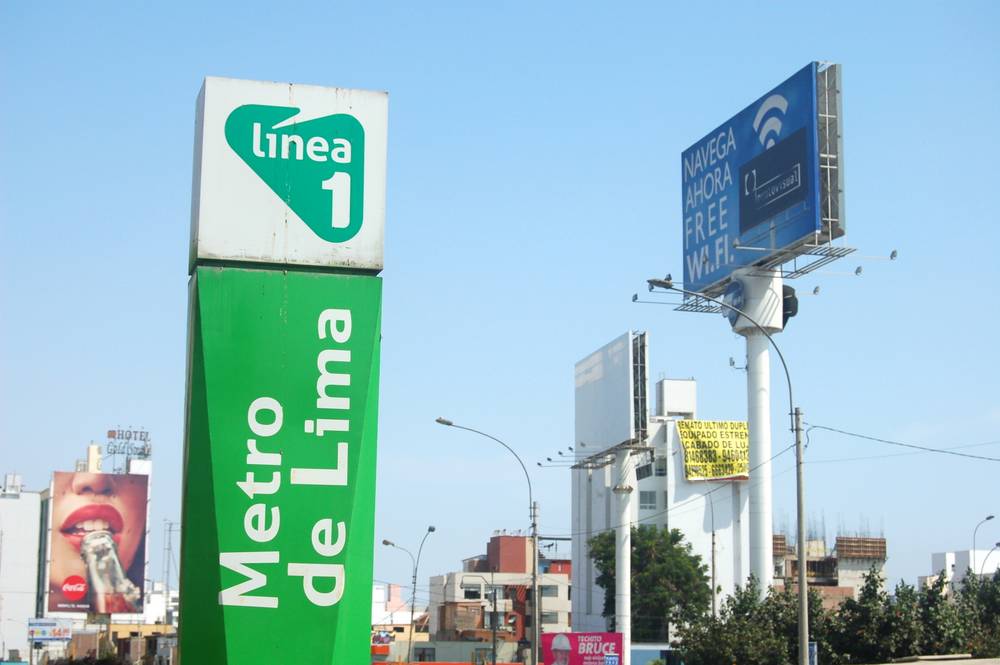Figuring out Lima’s public transportation system is like doing calculus blindfolded while riding a bicycle through molasses – a mental and physical challenge.
Lima is officially the gold standard of confusion when it comes to getting around the city. Though it might be a little naive to think we figured out Lima’s transportation system after only two weeks, that’s all the time we had to puzzle things out.
A few things to know upfront:
- This is an up-to-date, real-world look as of April 2016.
- Standard street smarts apply on all forms of transportation. I did not personally encounter any issues, but keeping a hand on your bag and a watchful eye is never a bad idea.
- There’s no such thing as a transfer ticket, so expect to pay for each leg separately.
- There’s also no such thing as an official map showing all the bus routes – despite our best searches, the best maps we found were typically inside the walls of the buses or platforms. A resident expat put together a map with a dozen or so recommended routes, but as mentioned on the site, it’s out of date. (I’ll note that the buses and major traffic patterns haven’t changed in most cases.)
Taxis in Lima – plentiful but unmetered
Walk to any major street in Lima and stick your arm out. If a taxi doesn’t stop for you within seconds, it might be the first time in Lima’s recorded history. From decrepit station wagons to late-model four-door sedans, taxis in Lima run the gamut. None of these taxis have meters, though, so your best bet remains telling the driver where you’re going, asking for their price, then accepting by getting in. You might have some luck negotiating, but you’re also likely to get honked at for holding up a lane of traffic. Avoid taxis that advertise only with stickers on their windshield.
Protip: some major department stores and malls have signs out front with set prices to specific places. Use as a guide, not an absolute – no one’s required to use those rates.
Metropolitano buses – crowded but straightforward
Introduced in 2010, this bus system is one of the only modern touches you’re likely to see on Lima’s streets. Call it an articulating bus system that runs on its own lanes and stations, if you prefer. Rides cost a flat 2.50 soles no matter the distance, but you have to buy a contactless card (4.50 soles) and add credit first. The yellow machines to do are easily spotted, and it’s easy enough to figure out (insert card in the clear slot, add coins or bills, then press the button to finalize the transaction. One card works for multiple people, and it’s only needed to enter the system. Note these machines do not give change – anything over and above the cost of the card gets added as credit automatically.
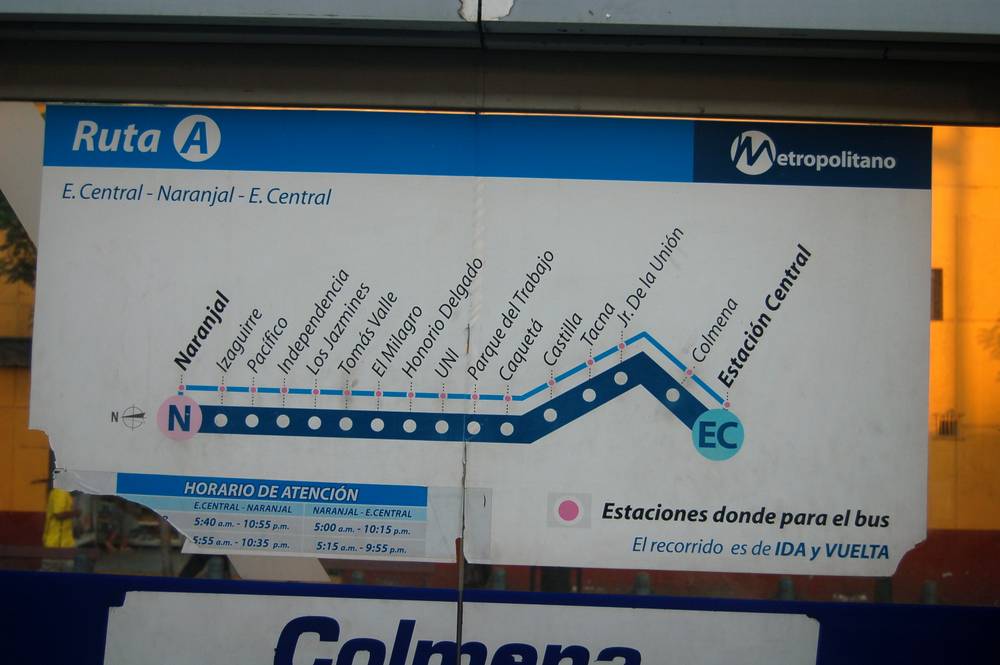
As of April 2016, three cleverly-named lines (A, B, and C) are essentially three sections to a single line. Line B (in orange) runs the full way, while lines A (sky blue) and C (green) each run to about half of the stations with a bit of overlap in the middle. Learn more on the Wikipedia page.
Protip: some stops (especially those on narrower streets) don’t have interconnecting platforms. Double-check the direction to ensure you’re going the correct way,
SIT buses – confusing but modern
The dark blue Sistema Integrado de Transporte (SIT) buses have a laudable goal: replace the private combis throughout the city. At a flat 1.20 soles for a ride of any length, it’s the cheapest way of getting around the city. Only a handful of routes are currently running as of April 2016, but it’s a promising start. A few routes in the 300’s run along Av. Arequipa, while a couple of routes in the 200’s run along Javier Prado.
Without riding them all or seeing a more complete map of the system, it’s difficult to know where exactly each of the buses terminates. It’s one of the better signed systems, though, and has the promising notion of stopping and accepting passengers only at designated bus stops.
Minivans, micros, combis, and other private buses – chaotic but necessary
Back in the 1990’s, the former president Alberto Fujimori established there weren’t enough buses for the city, so secondhand vehicles from private companies were allowed to begin running routes. With no bus stops, no route maps, and no consistent color schemes of vehicles, you’re forgiven for being bewildered.
Route numbers, where they exist, are two letters and two numbers (sometimes with a dash separating the pairs), and are usually on the back of the vehicle. Look for the black text on a yellow background, but don’t expect much help from the locals. Most bus routes stick to a handful of long, major roads, which are listed along the side of the bus. If riding this way, it will behoove you to know in advance which major road is nearest to your destination. I say ‘chaotic but necessary’ since this is the only ‘system’ in place across the entire city.
All buses of this type have a chart on an inside window showing ticket prices, which is unlikely to be 100% accurate. Some buses may have a faded or torn bus route map, which is also unlikely to be 100% accurate. Broadly speaking, the common categories are urbano, interurbano, interdirecto, and directo, though not all categories will be seen on all buses. For most rides across town, expect to pay 2-3 soles to the cobrador, the money taker and barker – tell them where you’re going and offer some coins (if you must use a bill, make it a 10 or 20 soles bill). Yell baja aquí! to get off, or just make your way to the door.
Finally, a warning: the streets are long, and there are several streets with confusingly similar names.
Protip: you can sometimes just say ‘Urbano’ and pay the 2 soles listed on the chart on the window. Also, look for them to stop before or after a SIT bus stop, but not at the bus stop. It can’t be a law they’re actually following, but perhaps a convention people have come to expect.
Metro light rail – modern but not that useful
Don’t confuse this with the Metropolitano buses, or the large Metro stores. Call it ‘Linea 1’ or ‘Metro de Lima’ if you need to refer to it, but don’t be surprised if you get a puzzled or confused look from a local. It opened for commercial service in 2011, but has a construction history dating back to 1986. (Lines 2 through 6 are at varying stages of construction, development, and consideration, but based on the speed at which the first line was completed, don’t hold your breath unless you’re reading this in 2025.)
The overhead light rail line is the longest in South America at 34.6km, and is fairly priced at a flat 1.50 soles per ride. Like the Metropolitano, you have to purchase a contactless card (5 soles) and put credit on it first. Note these machines do not give change – anything over and above the cost of the ticket gets added as credit automatically. This card is, of course, incompatible with the Metropolitano’s card and system. During busier times, this can mean waiting in two lines – one to buy / recharge the card and another to actually go through the turnstiles.
iTunes and Android apps, along with a website.
Like this post? Like the Facebook page!
- 5 things a Digital Nomad should never travel without - May 29, 2018
- The Tackiest Souvenirs Contest of 2019 - May 28, 2018
- Get off the beaten path in Budapest: a review of Budapest Flow’s tours - May 11, 2018

